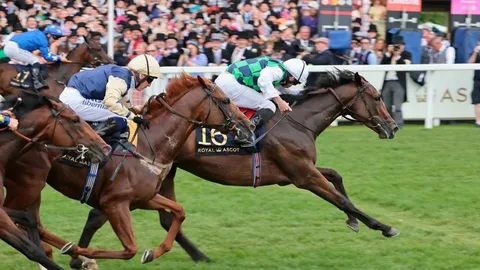From Paddock to Payout: Understanding Horse Racing Odds
Horse racing has captivated audiences for centuries, combining the thrill of speed with the excitement of betting. Whether you’re a seasoned punter or a curious newcomer, understanding horse racing odds is crucial for making informed bets and maximizing your potential returns. In this article, we will explore the journey “From Paddock to Payout: Understanding betting on horse racing Odds,” breaking down how odds work and what factors influence them.
The Starting Point: What Are Horse Racing Odds?
At the heart of any horse race are the odds—numerical representations of a horse’s chances of winning. Odds indicate how much you can win relative to your stake. For example, if a horse has odds of 5/1, this means that for every $1 you bet, you stand to win $5 if the horse finishes first.
Understanding odds is essential because they reflect not only the horse’s perceived chance of winning but also the potential payout. The higher the odds, the less likely the horse is to win—and the greater the payout if it does.
From Paddock to Payout: How Odds Are Formulated
Before the race even begins, bookmakers and betting markets closely analyze various factors to set the odds. These include:
- Form and Performance: Past performances of the horse in recent races.
- Jockey and Trainer: The reputation and success rate of the jockey and trainer.
- Track Conditions: Weather and track surface, which can significantly impact a horse’s performance.
- Market Demand: How much money is being wagered on a particular horse.
The “From Paddock to Payout” journey starts right at the paddock, where bettors observe the horses before placing their bets. Observations such as a horse’s demeanor, fitness, and behavior can influence betting choices, which in turn affect the odds as betting volumes fluctuate.
Types of Odds and What They Mean for Your Bet
Horse racing odds can be presented in different formats depending on where you are:
- Fractional Odds: Common in the UK, e.g., 7/2.
- Decimal Odds: Popular in Europe and Australia, e.g., 4.50.
- Moneyline Odds: Mainly used in the US, e.g., +350 or -120.
Knowing how to read these odds is part of understanding the “From Paddock to Payout” process. They help you gauge potential winnings and compare which bets offer the best value.
Maximizing Your Payout: Strategies for Smart Betting
Understanding odds is the first step, but using them wisely can make the difference between profit and loss. Here are some tips:
- Research Thoroughly: Look beyond odds and consider horse form, jockey stats, and track conditions.
- Shop for the Best Odds: Different bookmakers might offer slightly different odds for the same race.
- Manage Your Bankroll: Bet responsibly and never wager more than you can afford to lose.
- Watch the Market: Odds can shift dramatically as the race time approaches based on where money is going.
Conclusion
The journey “From Paddock to Payout: Understanding Horse Racing Odds” is an essential pathway for anyone interested in horse racing betting. Grasping how odds are set, what influences them, and how to interpret them equips bettors with the knowledge to make smarter wagers. With practice and observation, you can enhance your betting strategy and potentially turn your knowledge of odds into profitable payouts.


